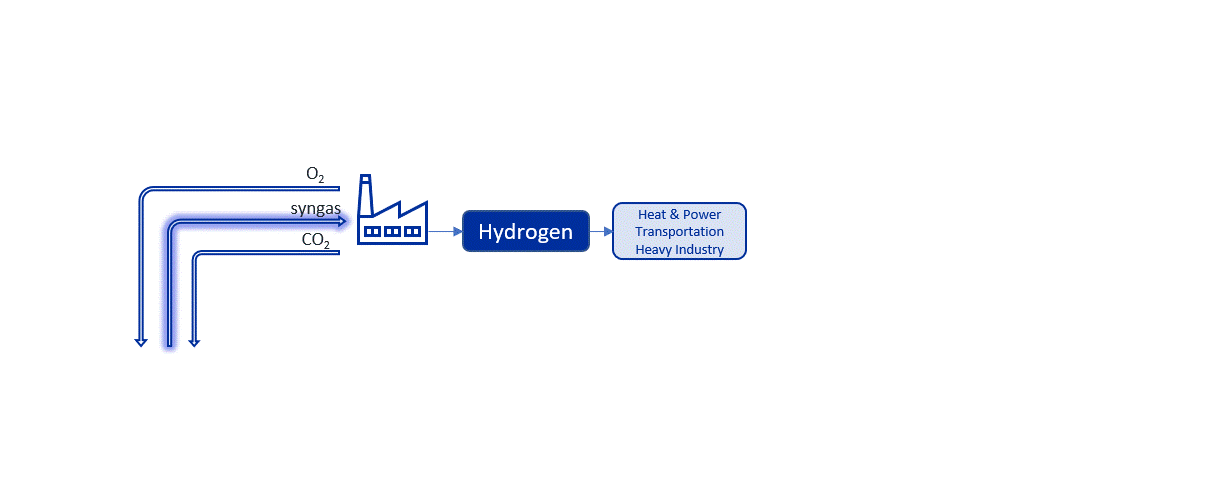
Products
Cv̄ictus can decarbonize the most difficult sectors by producing hydrogen and chemical feedstocks from bolt-on standard equipment, downstream of our core Enhanced Hydrogen Recovery™ (EHR™) process.

The Greenest Blue H2
The world today produces over 90 million tonnes per annum (Mtpa) of hydrogen, almost all from steam methane reforming (SMR) that is as dirty as coal-fired power generation.
Electrolysis from renewable energy is much cleaner but also higher cost and consumes huge amounts of fresh water (14-18 t/t H2).
Cv̄ictus's patented and proprietary Enhanced Hydrogen Recovery™ (EHR™) technology can produce clean hydrogen with lower carbon intensity than green hydrogen from hydropower and at a cost that’s less than half the cost of hydrogen from SMRs.
Clean
Ammonia
The ammonia market is around 189 Mtpa, primarily fertilizers and chemicals. Ammonia is also an excellent way to transport hydrogen.
Cv̄ictus can easily produce clean ammonia (NH3) by combining our clean hydrogen and 'free' nitrogen from the upstream air separation unit we already have for oxygen supply.
Clean
Methanol
Methanol is a critical feedstock in chemical manufacturing and an emerging low-carbon fuel for ships and transport. The existing market is around 160 Mtpa, primarily produced through steam methane reforming, which emits huge CO2 emissions and consumes massive amounts of fresh water.
The synthesis gas (syngas) that EHR™ produces has a perfect make-up of CO and H2 to be easily converted to methanol at the surface with a modular bolt-on facility and integrated carbon management. Our clean methanol will also support Cv̄ictus's biomanufacturing efforts as the primary substrate for our methylotrophic bacteria fermentation process.
Single Cell Protein
Fermentation of single cell protein (SCP) using methanol as the source of energy and carbon was commercialized by ICI in the 1970's and '80's but disappeared because of the price volatility of methanol. Cv̄ictus has replicated that process with modern technology and can produce a high protein, low cost substitute for fishmeal and soybean meal in animal feed.
Cv̄ictus can produce globally impactful volumes of low-cost animal feed that can enable large scale reforestation, reduce atmospheric CO2 levels, replenish oceans, and nourish a growing world population.
Carbon Sequestration
Global carbon sequestration capacity needs to increase from our current 40 million tonnes per annum to over 5,600 Mtpa by 2050 to materially reduce anthropogenic emissions and limit climate change.
Cv̄ictus has introduced a new method for sequestration by turning coal from a source to a sink of CO2. Our EHR™ technology creates the voids and pore space to sequester far more CO2 than our process brings to the surface. By changing the geometry of our underground panels, we can sequester huge amounts of CO2 from other sources like coal-fired power plants, cement plants, and steel mills.